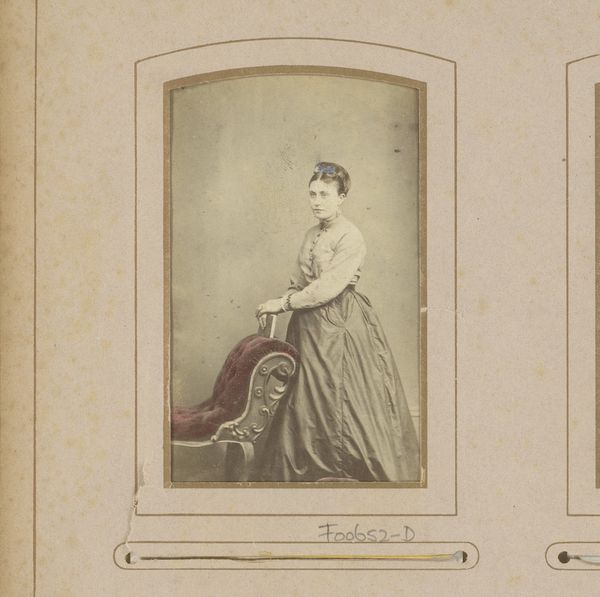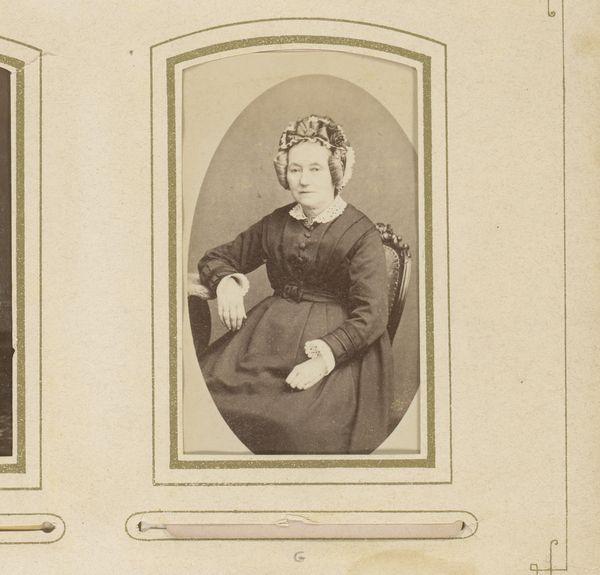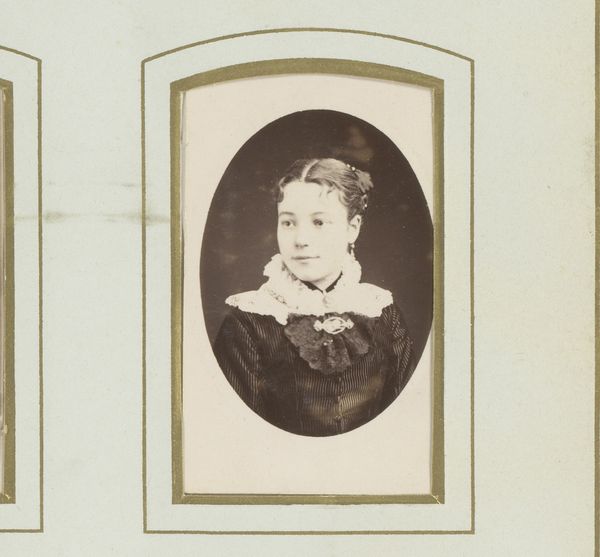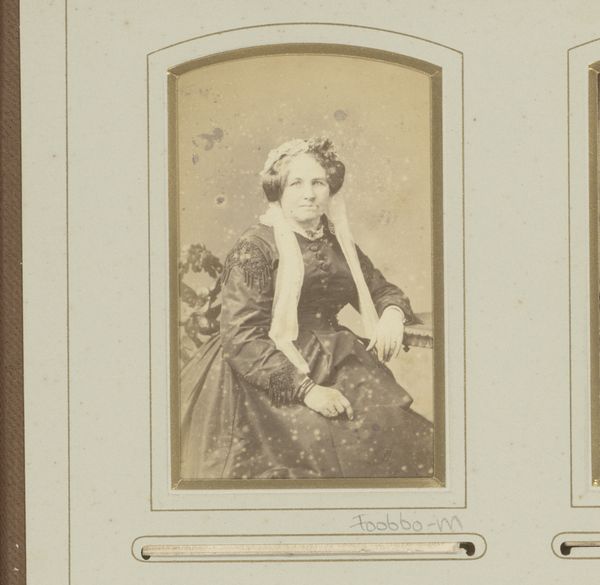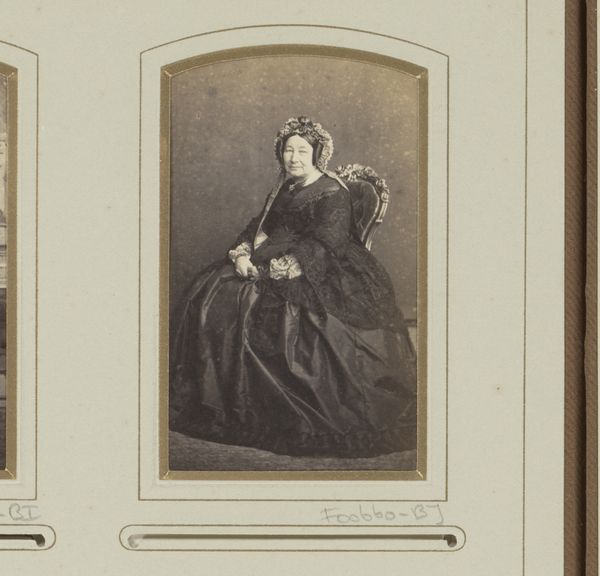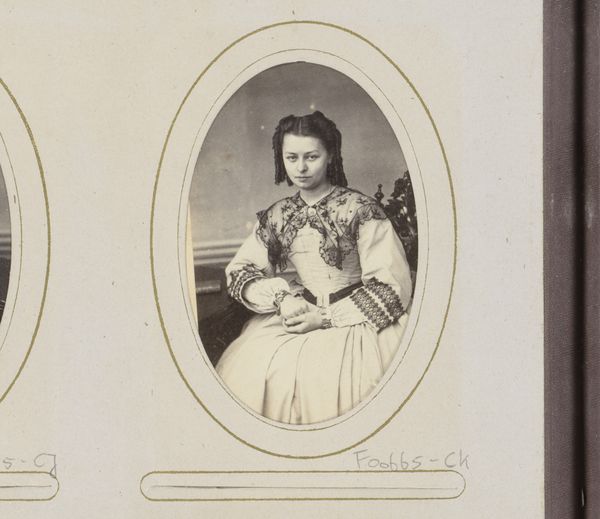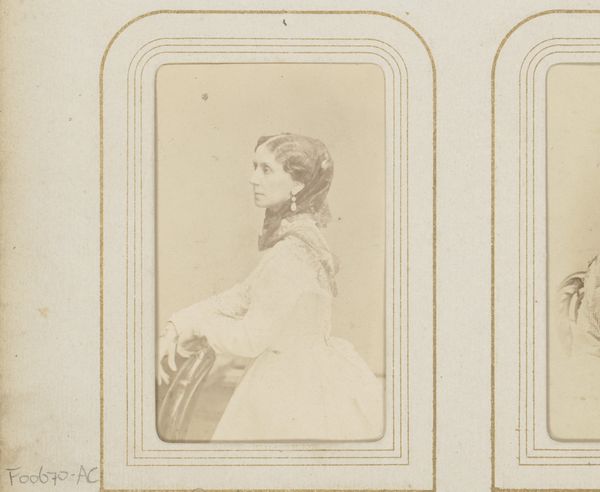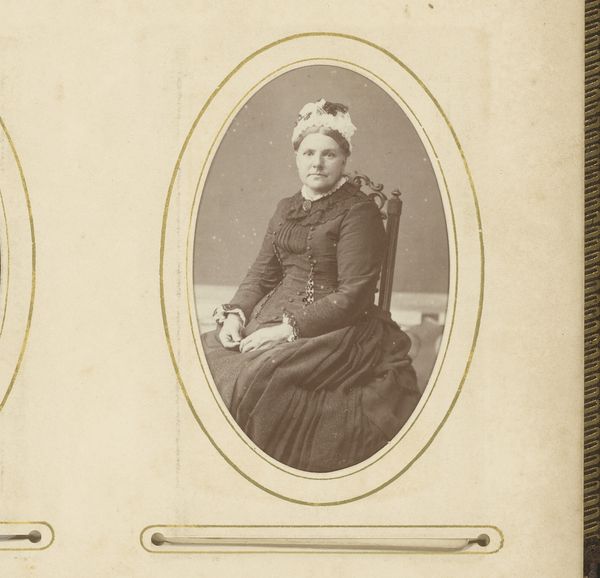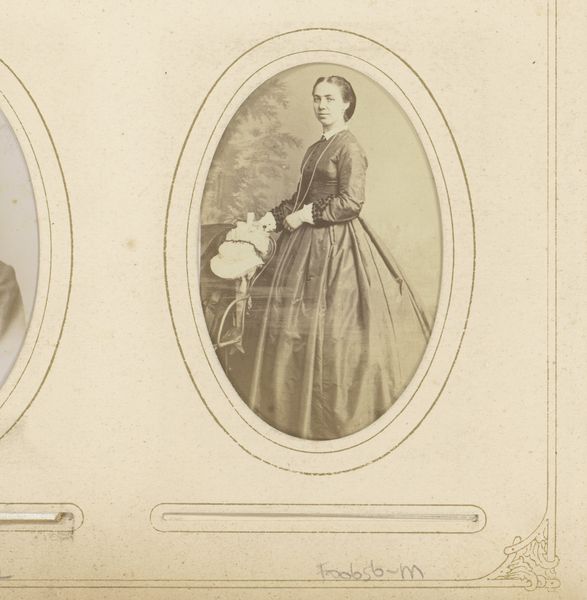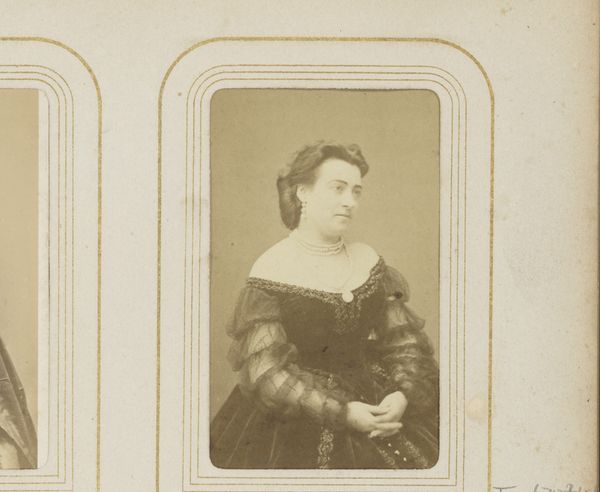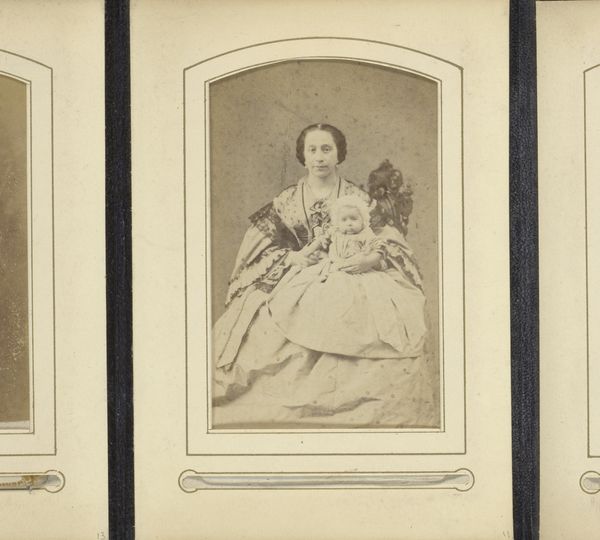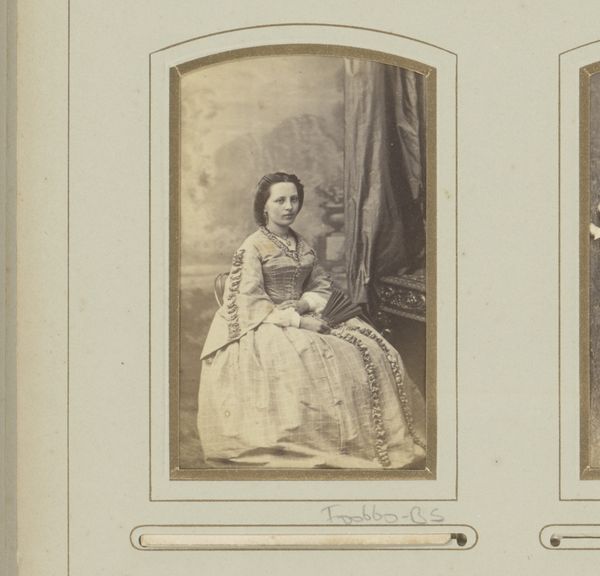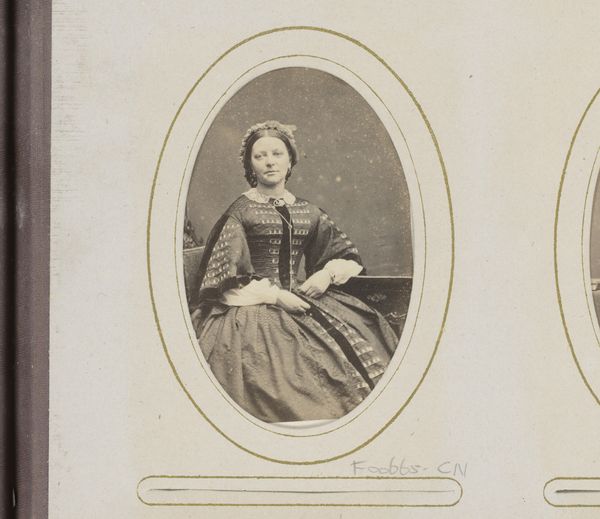
daguerreotype, photography
#
portrait
#
daguerreotype
#
photography
Dimensions: height 84 mm, width 54 mm
Copyright: Rijks Museum: Open Domain
Editor: Here we have a daguerreotype, a photographic portrait of Louise, Queen of Sweden, from around 1865. It's fascinating to see such an early form of photography depicting royalty! I am struck by her regal posture. How do you read this image in terms of its historical context? Curator: This image allows us a glimpse into the self-presentation of royalty during a period of immense social change and evolving technologies. The daguerreotype itself, while innovative, was also very accessible compared to painted portraits that could only be commissioned by the wealthy. By the 1860s, photography studios were widespread; Queen Louise likely visited one, making portraiture less exclusive and promoting an idea of royal approachability. How do you think the choice of photography over painting influenced perceptions of the monarchy? Editor: I see your point about approachability! It seems almost like a conscious decision to embrace a more "modern" image, even while upholding the traditional symbols of status through jewelry and clothing. The portrait feels very controlled, not intimate. Curator: Exactly. It's a manufactured image, meant for public consumption and likely destined for circulation within royal circles or even for distribution. Royal imagery always has a political function; what is interesting is how this relatively new technology becomes integrated into it. In some ways, the apparent realism afforded by photography might have even enhanced the perceived power of the monarchy by making it seem less idealized, and more grounded in reality. Editor: I never thought about the "realism" of photography as a tool for solidifying power! Curator: Consider also the role of photography in building national identity at this time. These portraits helped to standardize the visual image of royalty across geographical spaces. What do you think are the broader implications for image making within politics, given photography’s apparent “authenticity”? Editor: It definitely reframes how I see not just royal portraits, but any official image used to promote a specific narrative! It's really given me a different lens to see not just this work, but to view the way all imagery can reinforce political ideologies.
Comments
No comments
Be the first to comment and join the conversation on the ultimate creative platform.
